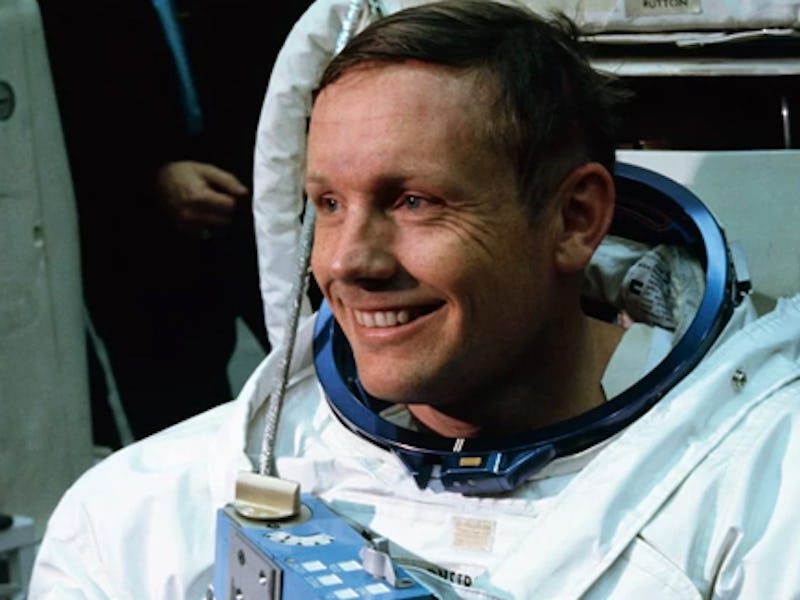The 'Armstrong' Documentary Offers a Look at the Unflappable Astronaut
NASA's cream of the crop laughed in the face of danger and tweaked the nose of terror

Neil Armstrong was no stranger to potentially critical situations. Not only did the Apollo 11 lunar module Eagle come within seconds of having to abort, but in the years before that, Armstrong stared death in the face on more than one occasion and emerged the victor.
These incredible chapters from the life of the quiet man from Wapakoneta, Ohio and more, are explained in the new documentary called Armstrong that’s out July 12.
Within the last 12 months, we’ve seen the underrated movie First Man staring Ryan Gosling in the title role and directed by Damien Chazelle; we’ve also seen the Apollo 11 documentary, plus the Blu-ray release of HBO’s mini-series From The Earth To The Moon, which beautifully chronicles different elements of the whole Apollo program from unique and often unusual perspectives.
First Man actually shows a number of Armstrong’s dances with the devil, and in fact, the movie opens with his near-fatal X-15 test flight on April 20, 1962, an incident that has gone down in folklore with test pilots at Edwards Air Force Base in California.
Armstrong and an X-15-1 rocket-plane after a research flight in 1960
During his sixth X-15 flight, Armstrong flew to a height of over 207,000 feet (63 km) which is well outside the atmosphere. To thoroughly test the MH-96 – a new G limiting device designed to keep the aircraft from exceeding 5 Gs – he kept the nose up during it’s decent.
Consequently, he began to skip off the atmosphere like a rock skimming across a pond and his aircraft bounced back up to around 140,000 feet (43 km). With not enough air for his flight control surfaces to react with, he couldn’t turn, so he followed a ballistic path like an artillery shell over the San Gabriel Mountains, toward the populated areas of southern California. Armstrong eventually pulled a giant U-turn and headed northeast in a steep glide toward the lake beds he’d originally overshot.
Recovery of Gemini 8 from the western Pacific Ocean; Armstrong sitting to the right
Also shown in First Man is Armstrong’s Gemini 8 mission. A few years after the X-15 incident, in March 1966, Armstrong’s two man Gemini spacecraft was supposed to dock with an unmanned spacecraft called the Agena that had been launched into orbit, but it suffered the first critical in-space system failure of a US spacecraft, threatening the lives of both Armstrong and astronaut David Scott.
This was part of the essential research needed to enable the Apollo command and lunar modules to dock in Earth orbit and again later, in lunar orbit. However, a thruster malfunction on the Agena sent the two astronauts tumbling into space, out of control. As both astronauts were on the verge of blacking out, Armstrong’s quick thinking led him to turn off the entire thruster control system and use the re-entry control system on the nose of the spacecraft to regain command of Gemini 8 and stop the spin.
Armstrong is a new documentary that focusses on the legendary astronaut's life
This new documentary however takes a different approach – it uses home videos shot by the man himself and unseen footage from NASA to tell the celebrated astronaut’s life story. Narrated by Harrison Ford, it’s directed by veteran documentary filmmaker David Fairhead.
According to the official synopsis, Armstrong examines the life of an extraordinary figure in American history, “recounting Armstrong’s near-death experiences both as a Navy fighter pilot in Korea (flying from the decks of the USS Essex aircraft carrier) and as a test pilot back on the home front… The documentary also captures the intense drama of the Gemini 8 and Apollo 11 missions as well as dizzying challenges that followed in the turbulent wake of global fame.”
It will be screen in select cinemas across the country and will also be available on some video on demand channels.